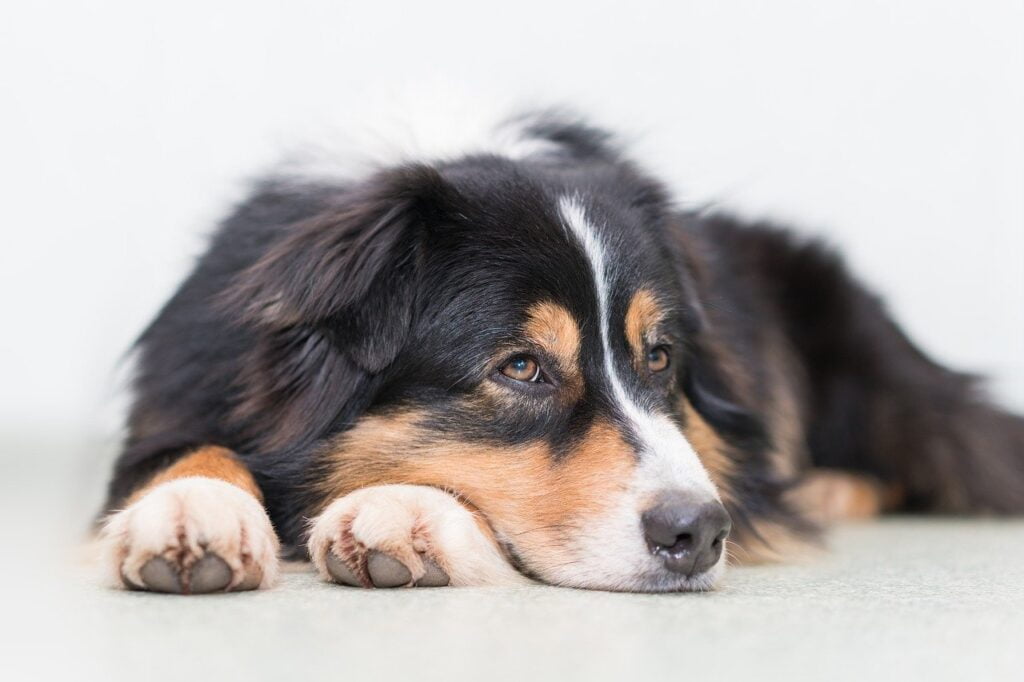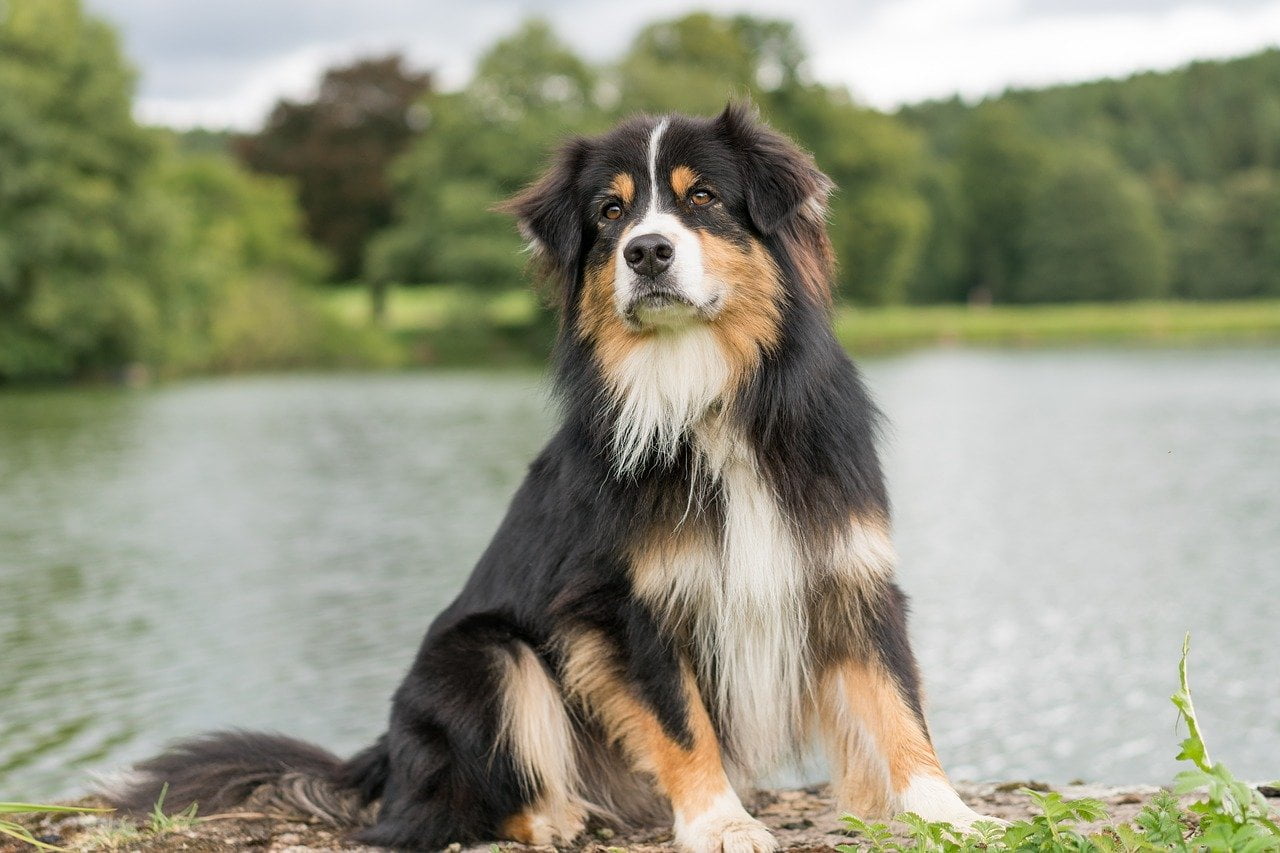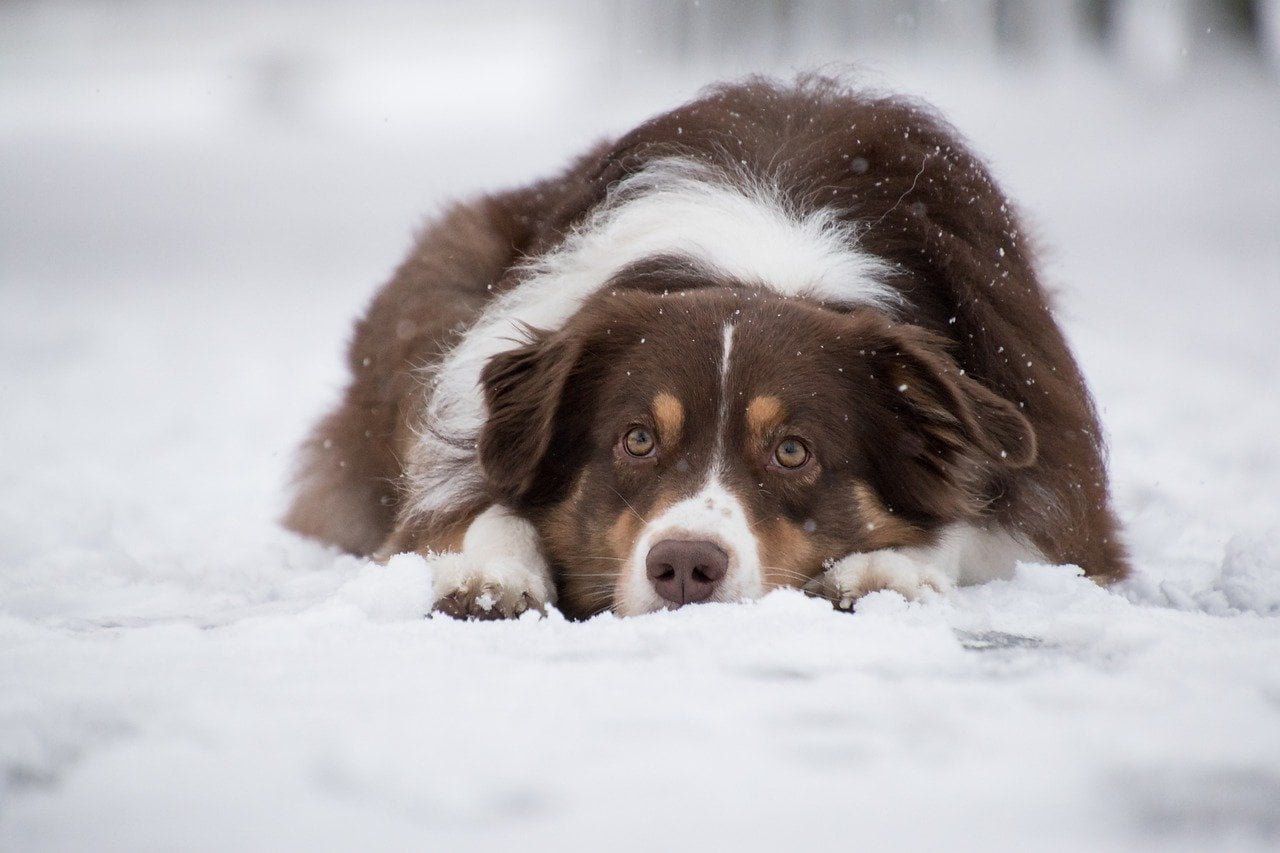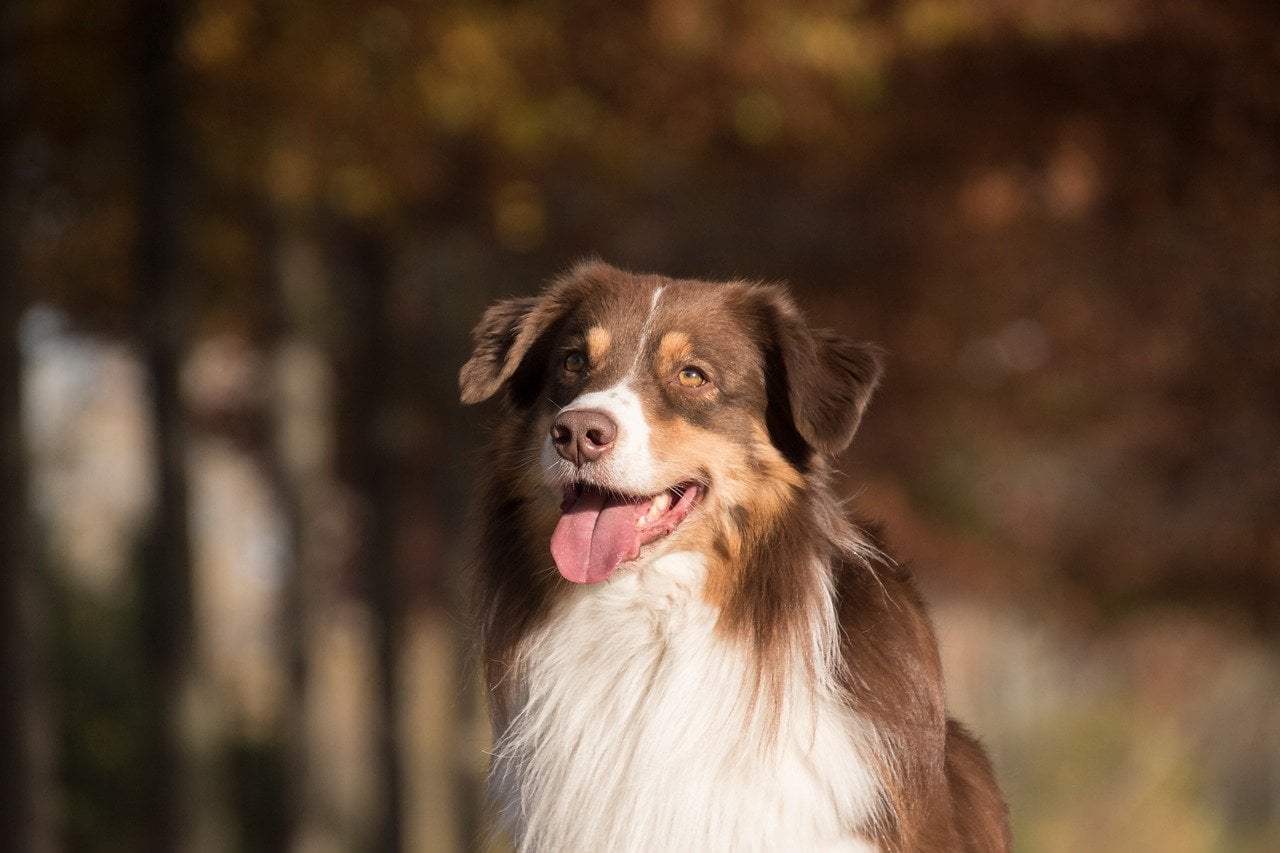
- Home
- Stud Dogs
Some of our most popular Stud Dog Breeds:
- Puppy Litters
- Dog Services
- Dog Breed Profiles
- Blog
- Contact Us
Australian Shepherd Breed Profile

The Australian Shepherd, despite its name, originated in the United States. They are working dogs that love having a purpose in the household. The working instinct comes from behaving as a sheepdog on ranches in Western America, however, more recently, they have been used in service, search and rescue operations, and even in show rings, due to their obedience and striking appearance.
The Australian Shepherd has got plenty of energy and is not a breed for everyone – they would best suit a family with an active lifestyle and large, open spaces to keep them busy. Aussies, as they’re nicknamed, love to be around their family, and they’re an excellent household companion, as they tend to favour a human herd due to their affectionate and loyal nature.
Typical Australian Shepherd Facts:
Height: 18-23 inches (46-58 cm)
Weight: 50-65 lbs (23-29 kg)
Average Litter Size: 6-7 puppies
Life Expectancy: 12-15 years
Kennel Club Classification: Herding
Good with Children: No
Colour of an Australian Shepherd:
An Australian Shepherd’s coat can be several different colours and markings. Colours include red and black, however, their markings can be either solid, merle (patchwork markings) or tri-colour (black, tan and white).

Grooming a Australian Shepherd:
The Australian Shepherd has a water-resistant, average-length, double-layer coat, and their undercoat depends on the climate they live in – Aussies will have a thicker undercoat if they live in colder conditions.
The Australian Shepherd’s coat makes the breed prone to a substantial amount of shedding throughout the year, especially during spring, where they lose their winter coat. This can be controlled through brushing the coat a couple of times a week, particularly during shedding season. Their coat can easily get tangled, so try to get all the way down to their undercoat when brushing to eliminate any matts in the coat. Their longer coat can pick up dirt easily, especially if they are staying active throughout the day, so wash them when necessary, or around two to three times a month.
When grooming, make sure to check your Australian Shepherd’s eyes and ears for any signs of irritation or inflammation, as they are prone to some eye conditions, so watching out for early signs is essential. Trimming their nails around once a month, or when necessary, is also essential to prevent any pain from overgrowth or splitting.
Australian Shepherd Common Ailments/Health Issues:
Australian Shepherds are generally very healthy, however, like all dogs, they can be at risk of developing some health conditions. Hip and elbow dysplasia, epilepsy, deafness, distichiasis (growing additional rows of eyelashes, affecting their sight) and hypothyroidism are the main health risks for Australian Shepherds; however, regular veterinary check-ups and maintaining awareness and good care at home can help to reduce the risk of these conditions developing.
Temperament of the Australian Shepherd:
Australian Shepherds often like to dominate the household due to their previous involvement in herding. They are extremely confident and active dogs, and they rarely sit still for too long. However, this nature makes them very loyal and protective of their family, with them being aware and slightly cautious of strangers.

Training an Australian Shepherd:
Australian Shepherds are extremely intelligent dogs with working instincts, making them a fairly easy breed to train. However, their desire to be the pack leader will have to be matched with a confident trainer who can make it clearly aware that they are the boss. This breed is known for its participation in obedience and agility competitions, so, with the correct trainer, they will naturally listen and obey.
Implementing puppy training and providing opportunities for socialisation with other dogs early on is recommended in order for your Australian Shepherd to learn basic household skills and dog etiquette.
Exercise for an Australian Shepherd:
Exercising an Australian Shepherd is essential – they have a huge amount of energy and will rarely sit still due to their busy nature. They are very well suited for families who stay active, and the Aussie can become a companion for walking or running. Two half-hour, brisk walks a day, with additional off-lead playtime, should be the minimum exercise for this breed, but they will be sure to let you know when they’re bored and need to be let out!
History of the Australian Shepherd:
The Australian Shepherd originated from Western America, despite its name. The breed worked on ranches as sheepdogs, brought over by Pyrenees peoples of southwestern France and Spain in the 1800s. The dogs who came over with these Basque shepherds were known as their “little blue dogs”. The breed became popular when their skills in herding were noticed among locals, and soon, American ranchers began to buy the dogs off of the Basque shepherds, using them to herd cattle and livestock for farmers. These Western farmers would pasture their livestock in the Rocky Mountains, adapting the Aussies to work at higher altitudes. Many Australian Shepherds still remain in this job role today.
There is uncertainty over where the name “Australian Shepherd” came from. Many believe it was from the origin of their ancestors, whereas others consider it to originate from the herds of livestock or workers on the ranches, who previously worked in Australia.
The ancestors of the Australian Shepherd are often questioned. It is assumed that shepherd-type dogs and Collies were bred as they were imported with flocks of sheep in the 1840s from Australia. As the popularity of Western-style films, rodeos and horse shows grew after World War II, the breed became widely recognised as they worked alongside cowboys on ranches, leading to the breed eventually being recognised by the American Kennel Club in 1991.
The popularity of the Aussie caused the Miniature Australian Shepherd to be bred in 1968 in California. Breeders wanted Australian Shepherds to be better house dogs, but with the same characteristics of the original Australian Shepherd. In 2012, these dogs were recognised as Miniature American Shepherds.
Today, many Australian Shepherds are still used across Western America herding livestock, and they can also be found working as service dogs, particularly in search and rescue teams, due to their intelligent and focused nature. Many are also simply companion dogs for families.

Famous Australian Shepherds:
Many Australian Shepherds were featured in cowboy films and TV shows, including Bunk, the sidekick of cowboy film star Jack Hoxie.
Australian Shepherd Stud Dog Listings:
A dog owner since the early 80s, after convincing his parents to buy a Yorkshire terrier named Sadie, Darren created Dream Dogs so dog owners could find the best dog related information on the Internet.